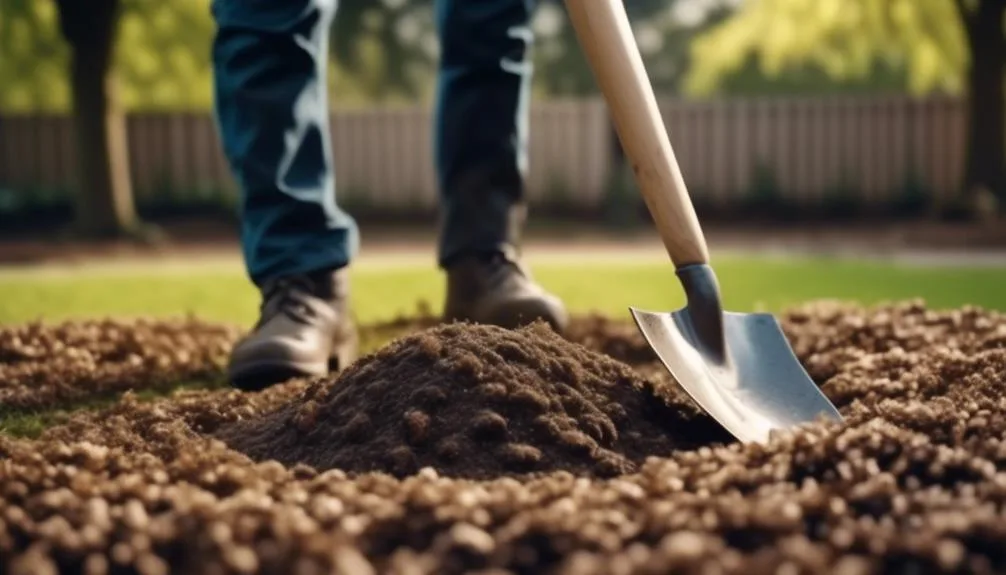Are you ready to help your elm trees reach their full potential? Fertilizing them is a crucial step for optimal growth, but where do you start?
Understanding their specific needs, from soil testing to choosing the right fertilizer, is key. With the right knowledge, you can set your elm trees on the path to flourishing.
Let's explore the essential factors for nurturing these majestic trees.
Soil Testing
Before starting to fertilize your elm trees, it's essential to conduct a soil test to determine the specific nutrient needs of your soil. The soil test will provide valuable information about the pH level, nutrient levels, and organic matter content of your soil. Interpreting results from a soil test can help identify any nutrient deficiencies, allowing you to tailor your fertilizer application accordingly. Interpreting these results will guide you in selecting the right type of fertilizer and the appropriate quantities to address any deficiencies.
Choosing the Right Fertilizer
To ensure optimal growth of your elm trees, selecting the right fertilizer is crucial for providing the necessary nutrients they require. Elm trees have specific nutrient requirements, so it's important to choose a fertilizer that contains a good balance of nitrogen, phosphorus, and potassium. Nitrogen supports healthy leaf and stem growth, phosphorus aids in root development and overall plant health, while potassium helps with disease resistance and cold hardiness. Look for a balanced, slow-release fertilizer specifically formulated for trees, as this will provide a steady supply of nutrients over an extended period. Understanding these nutrient needs will guide you in selecting the most suitable fertilizer for your elm trees' optimal growth.
Application Timing
Consider the specific growth stages of your elm trees when determining the most effective timing for applying fertilizer. The seasonal schedule plays a crucial role in deciding when to fertilize your elms. Here's a breakdown of the best times to apply fertilizer:
- Early Spring: This is the optimal time to fertilize your elm trees. Applying fertilizer at this stage promotes healthy growth and nutrient absorption, setting the stage for the growing season.
- *Tip*: Use a slow-release fertilizer to provide a steady supply of nutrients throughout the spring and summer.
- Early Fall: Fertilizing your elm trees at this time helps in preparing them for the upcoming winter and ensures that they've the necessary nutrients to endure the colder months.
- *Tip*: Choose a fertilizer with a balanced nutrient ratio to support overall tree health during the dormant season.
Proper Fertilizer Application
For optimal growth of your elm trees, the proper application of fertilizer is essential to ensure they receive the nutrients necessary for healthy development.
When applying fertilizer, it's crucial to distribute it evenly around the tree's root zone to promote uniform nutrient absorption. Start by calculating the tree's drip line, the outermost reach of the branches, and apply the fertilizer in a band around this area.
Avoid placing the fertilizer directly against the trunk to prevent root burn. After application, water the area thoroughly to help the nutrients penetrate the soil and reach the tree's roots.
Proper fertilizer distribution is key to providing the tree with the essential elements it needs for growth and overall health. Following these steps will ensure that your elm trees receive the optimal benefits from the fertilizer.
Monitoring Growth
Monitoring the growth of your elm trees allows you to track their progress and address any potential issues early on. Here are some key points to consider:
- Regular Inspection: Take the time to regularly inspect your elm trees for any signs of stunted growth, discoloration, or pest infestations. This proactive approach can help you catch problems early and take necessary action.
- *Pruning Techniques*: Regularly prune your elm trees to remove dead or diseased branches, promote healthy growth, and maintain an attractive shape. Proper pruning techniques can also encourage a stronger tree structure.
- *Water Management*: Keep a close eye on the soil moisture levels and adjust your watering schedule as needed. Proper water management is essential for ensuring optimal growth and overall tree health.
Conclusion
In nurturing your elm trees with the right fertilizer, soil testing, and timely care, you're paving the way for their sustained vitality. By staying attuned to their growth and needs, you can foster a landscape that endures and enriches for years to come.
How will your thoughtful stewardship ensure the lasting legacy of these majestic elms?

My interest in trees started when I first saw the giant sequoias in Yosemite.
I was a teenager then, and I remember thinking, “I need to learn more about this.”
That moment stuck with me.
A few years later, I went on to study forestry at Michigan Tech.
Since graduating, I’ve worked in a mix of hands-on tree care and community education.
I’ve spent over ten years helping people understand how to plant, maintain, and protect the trees in their neighborhoods.
I don’t see trees as just part of the landscape.
They are living things that make a real difference in our daily lives.
